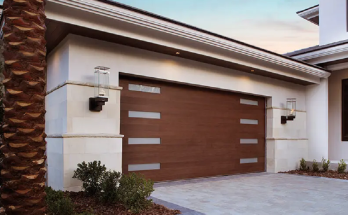Over the last decade, environmental disasters have seemingly become commonplace. And often, when they strike, they are stronger than prior incidents.
Homeowners might be up for the occasional renovation, and flexible loans provide easy access to funding. But it’s no fun if you have to face the realistic prospect of having to do this every year or two.
And it’s not just the threat of damage that people are dealing with in the age of climate change. In some areas, day-to-day living conditions have become unbearable due to these steadily worsening effects.
The phenomenon of climate migration is real. It has displaced millions worldwide and has already affected 1.2 million Americans, with more to come. It’s projected that 1 in 12 Americans will relocate from the south over the next 45 years.
What could this mean for your future living arrangements?
Location matters
The effects of climate change are felt around the world. But they don’t have a uniform impact on our lives.
Historically, some places are more vulnerable to certain kinds of environmental disasters. The East Coast must brace itself for hurricane season each year. On the West Coast, wildfires are the greater threat. Residents of the Midwest are all too familiar with the danger of flooding.
Scientists will quickly point out that we can’t jump to conclusions with something as unpredictable and volatile as climate patterns. But areas already prone to such events are likely to see them come more frequently and with greater intensity.
More than ever, location matters. It has already become a factor in the considerations of home buyers and sellers around the country. Only 10% say that climate change does not affect their decision-making.
But the effects of climate change don’t just extend to your comfort of living. Climate migration will displace people unevenly, too.
Any mass exodus will drive down prices in an area that’s no longer seen as desirable to live in. Conversely, a mass influx can cause a spike in the housing market due to increased demand.
Whether you’re already settled or looking to relocate, it will pay to vet your location’s climate vulnerability and action plans. This can be a strong predictor of the future value of property in the area. It can sway your decision to stay or leave, to buy or to sell.
Seeking a reduced footprint
Another higher-order effect of climate change is on managing one’s cost of living.
In the future, the need to manage our housing-related expenses carefully will likely dovetail with the need to minimize our environmental impact.
Regulating the comfort of our homes will require more energy consumption amid shifting conditions. The demand for energy will increase by 11-27% in moderate scenarios, 25-28% in worse ones.
And as we seek to bring the situation under control, this will likely take place against a background of increasing regulation and even tariffs on fossil fuel production and emissions.
By striving to lower your carbon footprint in the future, not only will you save money, you’ll be helping to save the planet as well.
Given the opportunity to build a new home or add features to existing properties, passive design principles can yield significant ROI. In warming areas, this could mean taking advantage of structural shading and better ventilation. For colder locations where the temperature rise won’t be appreciable, passive solar heating can be used instead.
Bracing for damage
Some places will always be more vulnerable to extreme weather effects. But as the world becomes a more volatile place to live in, you’d do well to heed the lesson of the black swan.
It pays to mitigate the impact of the highly improbable.
Even in areas known for stability, you can never really be certain if a once-in-a-lifetime event might strike. A freak storm, a cold snap, or a dry spell or heatwave leading to wildfires, all of these could happen almost anywhere.
Those whose homes are built to code, which is industry-speak for minimum acceptable durability, are likely to suffer the worst in such an event.
Given a chance, it makes sense for you to reinvest in your home. Make it more durable, bracing for extreme events that are likely to be stronger than anything that happened in decades past.
There’s a further advantage to improving upon existing structures: they are already the greenest ones we have. The upfront costs in terms of emissions and resource extraction have already been paid.
Make sure that your home can survive with less maintenance in a changing world, and you’ll once again cut down on costs while helping the environment.
What the Climate Migration Effect Means for Your Future Home




